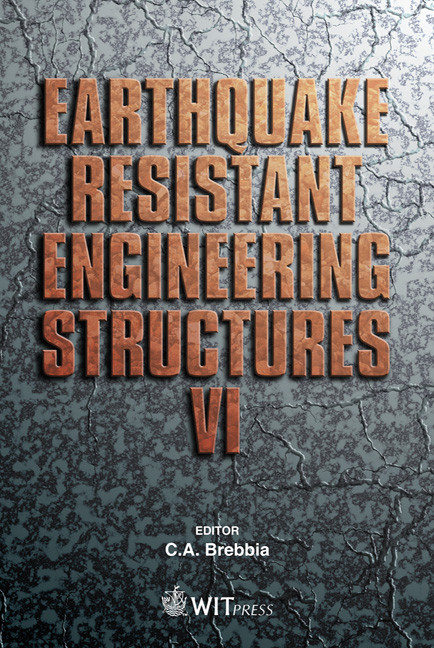Controlling Nonlinear Vibrations In Steel Structures Using An Evolutionary Gain Formulation To Optimally Satisfy Performance Objectives
Price
Free (open access)
Transaction
Volume
93
Pages
12
Published
2007
Size
1,302 kb
Paper DOI
10.2495/ERES070411
Copyright
WIT Press
Author(s)
R. Dansby & T. Attard
Abstract
An evolutionary gain formulation is implemented within a nonlinear quadratic control algorithm framework used to minimize the performance index of a structural steel system that is subjected to various earthquake ground motions. The control architecture is formulated using a numerical integration scheme that solves the nonlinear responses of a degrading system and formulates an optimal gain matrix that is used to control building displacement demands by satisfying the desired performance-objectives per time-step. The performance-objectives are defined for various ‘damage-safe’ and elastic demands to show the versatility of the proposed control solution. The results of the evolutionary gain approach are compared to more conventional LQR techniques. Towards this end, a COntrol NONlinear time-history analysis (CONON) program was developed to simulate the responses of kinematically strain-hardened systems and to compute the optimal semi-active device output forces per time-step as part of the control solution that implements the proposed evolutionary gain. The minimization of the cost function is independent of the weighing matrices of the system, thus alleviating any need to compute these terms per time step. Instead, an iterative Riccati matrix is determined per time-step and used to generate the evolutionary gain. The results are compared by examining several hysteresis plots of the steel system against other feedback-based methods. The proposed system implementation shows a marked increase in the ability to control the desired target response and meet acceptable performance goals. Keywords: performance-based analysis, evolutionary control, state-space analysis, nonlinear analysis.
Keywords
performance-based analysis, evolutionary control, state-space analysis, nonlinear analysis.





